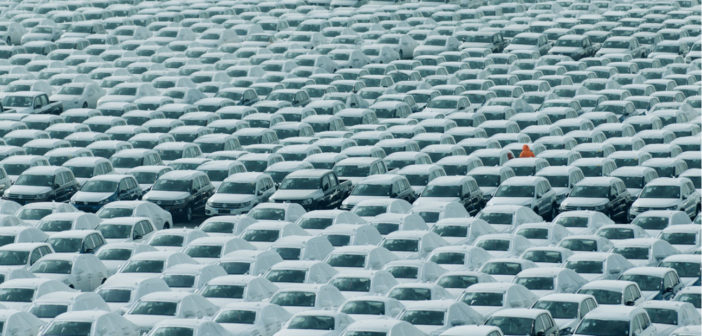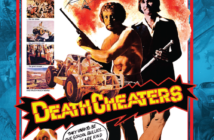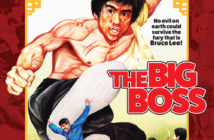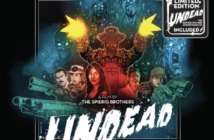This year’s Love and Anarchy film festival saw mostly sunny days in Helsinki, although the highest temperature was around 15 degrees Celsius. The festival is screened all over Helsinki in fifteen different cinemas, although seven of them are situated in the Kinoplasti multiplex near Helsinki University, and three of them in the complex of bars and auditoriums owned by the Kaurismaki brothers known as Bar Dubrovnik. It’s possible to travel from one location to another quite quickly by tram, metro or bus, although quite a few people do it by bike.
There were a number of interesting documentaries, and one notable event at this year’s festival was Girl Power, the world’s first documentary about the rising number of women graffiti artists around the world, made by Czech writer Sany, who still manages to keep her nocturnal activities a secret from her family, despite losing her job as manager in a Prague call centre due to her commitment to the film. Featuring women graffiti writers in fifteen cities, it includes Sydney, and a memorial to Lotus, the writer who died in 2011, and is commemorated by Spice and MC Thorn among others. Elsewhere, it ranges from Prague to Moscow, Cape Town, Biel, Madrid, Berlin, Toulouse, Barcelona and ends up in New York with Lady Pink, who says memorably ‘what, you need a penis to write graffiti?’ and Martha Cooper, the photographer featured in the landmark book Spraycan Art. Other artists featured include Anarkia (Rio de Janeiro); Claw Money (New York City); Dona (Madrid); Doze (Gdansk); Forma (Toulouse); Funky Girls (Milan); Igasm (Sydney); Ivey (Sydney); Lady Pink (New York City); Mary (Moscow); Mick La Rock (Amsterdam); Miss 17 (New York City); Motel 7 (Cape Town); MRS (New York City); Musa 71 (Barcelona); Nika Kramer (Berlin); Okada (Moscow); Puff Girls (Essen/Dusselforf); Quel (Moscow); RosyOne (Biel), Sheron (Berlin); Shamsia Hassani (Kabul); Spice (Sydney); Utah (New York City) and two anonymous Middle Eastern women wearing chadors. Quite a roll call, and it’s not complete. Unfortunately a heavy, melodramatic male US voice dominates proceedings where a female voice would have served far better, and we get served up a lot of redundant New York history available elsewhere, but there are some delightful sequences, notably in Cape Town, Amsterdam, Moscow and Madrid, and all power to Sany for seeing this project through, at considerable personal cost, and getting it funded and screened on Czech television.
Another notable documentary was Tango Suomi (Finnish Tango), directed by an Argentinian woman, Gabriela Aparici, who was present for a Q&A along with a large group of local participants in the film. It’s not the first film to tackle this theme, namely did the tango originate in Finland or Argentina, but it included a wide range of representatives of Finnish tango. There were relative youngsters such as the punkish Johanna Juhola, who states that she found Finnish tango boring, like military marches, and was inspired by Astor Piazzola and more recent Argentinian tango, which she reflects in her highly theatrical, energetic, electronic and playful Reactor Quartet, and more lugubrious exponents like the portly photographer who published a book of photos of historic Finnish tango without a single smile in it, and including the ‘cow line’, the line of women waiting to be asked to dance, to the old lady present in a wheelchair for whom tango was reflection of the past and her dead husband, to the Argentinian quartet Violentango, who switched from playing rock music to playing tango, to the Finnish tango exponent Pertti Mustonen, a singer who moved to Argentina and toured Finland in 2013. Generally exponents of Finnish tango are more well-known as singers than instrumentalists, like the great Olavi Virta, whose songs have featured in Aki Kaurismaki’s films, an early inspiration for this director. Other interviewees include Mika Kaurismaki, who always believed the tango was Finnish, and M.A. Numinen, an eccentric musician who has drawn on tango in an avant-garde context. There are all sorts of entanglements between Finnish and Argentinian tango, but if one can generalise from the tangos danced here in the snow, Finnish tango is more gentle and melancholic than Argentinian tango, which has a more passionate, as well as a darker side. There’s a nice sequence filmed in Helsinki Central Railway Station, with noted accordionist Maria Kalaniemi playing with a violinist as people go by on their travels. Debates will continue to rage about the definition of tango, but it remains a fascinating issue. As the director has said diplomatically, ‘despite the distance between our two countries we are more than kindred spirits’.
Another music documentary which was very much on the nose was Eat That Question – Frank Zappa In His Own Words, compiled by German director Thorsten Schütte and dedicated to the late Gail Zappa, who executive produced. Just when you thought everything had already been said about Zappa, this film comes up with more. Beginning with ‘Trouble Coming Every Day’ and ending with ‘Let’s Make the Water Turn Black’, which was censored in the USA because a waitress’s ‘pad’ was thought to be a sanitary napkin, it shows Zappa in a number of outrageous interview situations, some very close to the time of his death. It also includes the TV bicycle sequence from the early 1960s, and footage of his classical work. With ‘new’ Zappa releases coming out regularly these days, the idea that all his work is just one big composition is being stretched to the utmost, and it’s nice to be reminded of some of his greatest moments, like the reception he received when he arrived at Prague airport to be appointed cultural adviser to the Czech government by Vaclav Havel in the late 1980s, and was greeted by hosts of Czech dissidents who had never hoped they would ever see him in person.
Heart of a Wolf was a documentary about the Estonian folk metal band Metsatöll, and their Finnish comrades Finntroll, for which the flamboyant pink-haired Estonian female director Liina Paakspuu was in attendance, but unfortunately not speaking a language I could understand (Estonian and Finnish are very similar). But it was a highly enjoyable film, not least because the lyric writer of the band, Lauri Õunapuu, also plays traditional Estonian bagpipes, and the band prides itself in singing exclusively in Estonian, although they have released a couple of albums in English due to record company pressure. As Paakspuu has said elsewhere: ‘I like that there is something primitive and even naíve about Metsatöll’s music, but it has a sort of raw power that can unexpectedly hit you in the core of your inner cosmos. There are common traits to all Nordic folk metal bands. Finntroll from Finland is a huge name across the world and figuratively the band is like a big brother to Metsatöll. I chose four main characters from the two bands – the poster boys, meaning the lead singers Markus Teeäär and Mathias Lillmans and the hermits from the woods, meaning Lauri Õunapuu and Jan Jämsen. Wolves are a common symbol for both bands. Markus Teeäär from Metsatöll says in the film that he started to make Metsatöll’s music as through the eyes of a wolf. Wolves are important to Finntroll’s founder and lyricist Jan Jämsen as well, also in other art forms besides music’.
A US music biopic premiered here was I Saw the Light in which British actor Tom Hiddleston makes a surprisingly good Hank Williams, aided and abetted by Elizabeth Olsen as his feisty first wife and aspiring singer Audrey, but it’s pretty much downhill from there. There’s a mock-documentary framework which really doesn’t work, and despite the music being excellent, curated by Rodney Crowell and with Hiddleston singing all the songs, including ‘I’m So Lonesome I Could Cry’ over the credits, it just doesn’t gell. This has to be down to screenwriter-director Marc Abraham, who focuses too much on Williams’ marital struggles, alcoholism and concert no-shows and not at all on his creative process. One surprise for me was that Williams was diagnosed with spina bifida, a horrendous back disease which probably justified all his drinking. A film I wanted to like, not least for Hiddleston’s performance, but couldn’t.
The most prestigious guest at this year’s festival was British director Terence Davies, whose most recent film about Emily Dickinson, A Quiet Passion was a delight. Set almost entirely in interiors, with slow moving panning shots, it chronicled the poet’s social and physical decline, played impeccably by Cynthia Dixon (formerly of Sex and the City, but unrecognisable here), as she contacts Bright’s disease, a condition which causes her to have fits, and becomes more and more of a recluse, refusing to be seen physically by visitors, although she is willing to talk to them. Despite engaging constantly in barbed witticisms and cynical apothegms, she suffers within from acute loneliness, for which her exquisite poetry, which her father allows her to write between 3 and 6 am, and is put to good use in voice-overs in the film, is her only outlet. She finds solace in her family, especially her younger sister, Lavinia (a delightful Jennifer Ehle), and her iconoclastic best friend, Vryling Buffam (Catherine Bailey), and the dialogue between these two is a joy to behold, displaying a proto-feminist barbed wit. Emily crosses swords with her benign but autocratic father (Keith Carradine), especially over religious matters, and the rare excursion into the garden is a welcome relief from the almost relentlessly shuttered interior settings. Nonetheless it is a poignant film, and as her funeral, shot from above, inevitably comes accompanied by her most famous poem, ‘Because I could not stop for death/ He kindly stopped for me’, there is a definite satisfaction in the ending. The fact that only about six of her poems were published in her lifetime and that she is now considered the greatest American poet is cause for distress. The film was mostly shot outside Antwerp, being a Belgian co-production, but the garden sequences were filmed in Amherst at the historic house of Emily Dickinson. In his master class, Davies talked about his ten year hiatus between films, and his Finnish interviewer used the word ‘sisu’, which means endurance or perseverance, before his recent burst of activity which includes his Scottish epic Sunset Song, also shown at this festival, and which recently opened in Australia, and I reviewed a couple of weeks ago. The three Finnish words all foreigners should know are sisu, sauna and Sibelius, and Davies was able to wax lyrical about the latter, whose manuscript for his fifth symphony he was given to look at in the Helsinki national library. His other great musical passion is Bruckner, a very acquired taste for most, but the Dickinson film uses some Charles Ives, and Davies is always impeccably selective about his film music.
Another prestigious British director whose most recent film was screened here, but only once, was Ken Loach, who turned 80 this year. His I Daniel Blake very deservedly won the main prize at this year’s Cannes Festival. Basically a study of two casualties of the job centre in Newcastle, UK, much of it was a frighteningly realistic portrayal of unemployment bureaucracy, with the two main characters, Daniel (Dave Johns), a 59 year old carpenter who carves mobiles of fish and has suffered a heart attack and Katie (Hayley Squires), a single mother with two children who is forced out of London, forming an alliance which runs aground when Daniel discovers Katie has resorted to prostitution. It picks up again through the efforts of Katie’s daughter Daisy (a delightful performance by Briana Shann), but nonetheless ends in tragedy. It’s arguably one of Loach’s best films for a long time, and although one member of the exiting audience called it a ‘tear jerker’, it’s considerably more than that. A heart-rendingly savage indictment of present-day UK unemployment bureaucracy, it has a great feel-good moment when Daniel graffitis the film title and his beef on the wall of the job centre and is applauded by a gathering crowd before being dragged away by the old bill. Daniel is also not computer literate, and the film demonstrates how being unemployed is now basically an online condition.
The festival also features the final films in this year’s Nordic film prize, and one of these was the Icelandic Sparrows a Danish and Croatian co-production, and Runar Runarsson’s second film after his debut Volcano. It focuses on Ari (Atli Oskar Fjalarsson), a teenaged counter-tenor (or boy soprano) who is shown in an angelic choir in the film’s opening sequence, but then is despatched off to his father (Ingvar E. Sigurdsson), a drunk living with his mother in the Western Fjords, as his mother takes off to Africa to supervise a research project with her new Danish husband. Ari is disoriented, and his childhood friend Lara (Rakel Bjork Bjornsdottir), who still has affection for him, but has taken up with a boyfriend with anger management issues. When his grandmother dies he is further disoriented, but at least gets the chance to sing at her funeral. He is given a summer holiday job cleaning up in a fish factory, and the main leisure activity for teenagers is alcohol and drugs. Apart from a hunting expedition with his father, involving shooting seals, which he can’t face any more, he has to make do with what’s on offer, which is sex with an older woman. But when Lara breaks up with her boyfriend, he is goaded into a ritual involving sex and ketomine, which goes badly wrong, and he ends up in a precarious situation. Sophia Olsson’s cinematography is notable for framing people behind the mountains and moss of the West Fjords, and the music by former Sigur Ros multi-instrumentalist Kjartan Sveinsson adds considerably to the landscape, as one would expect.
Drifters is the totally inappropriate title of a Swedish film, Peter Gronlund’s debut feature, about a female drug dealer, Minna (Malin Levanon) who inhabits the lower depths of Stockholm, a trailer park with her cat, joining forces with Katja (Lo Kauppi). The Swedish title, Tjuvheder, means ‘honour among thieves’ but this was apparently unacceptable to some US academy of film titles, as it had been used in a number of previous US films, so the director had to settle for ‘Drifters’, which has already been used for a 2011 Italian film. It seems that European films often get lumbered with leftover titles. Both the director and lead actress took part in a Q&A after the film. Using mostly non-professional actors, some of them pretty grisly, the film has a verisimilitude about it which culminates when Minna sacrifices herself so that Katja can get her son back after both have been arrrested. The film ends with the trailer park being demolished. Another Swedish film on display was The Yard by Mans Mansson, adapted from a prize-winning 2009 novel by Kristian Lundberg. The protagonist, a middle-aged poet (theatre actor Anders Mossling in his first screen role), is forced to take a manual job in a car factory among mostly immigrants in orange jumpsuits in Malmo, after he uses his position as a leading literary critic to trash his own book. All the workers are referred to by numbers, and he becomes known as 1181, but he soon loses his job as the Kafkaesque management target him as difficult because he stands up for his fellow workers. One image stands out in particular: an orange jumpsuited man dwarfed in a sea of gleaming white cars. The music is a combination of very loud Wagner and ‘Forever and Ever’ by Demis Roussos, and it’s very droll.
Mellow Mud is probably the first film I’ve ever seen from Latvia, although it’s a co-production with Iceland, who provided the cinematographer. Written and directed by first-timer Renars Vimba, it’s hardly an endearing title, but it was named best film by the youth jury in the Berlin Film Festival’s Generation 14plus section, and the central performance by 17-year-old Raya (first timer Elina Vaska) is compelling. The original title, according to Vimba, who did a Q&A afterwards, was ‘Es esmu seit’ (I Am Here), and he emphasised that he wanted to make a film about a person who stayed in Latvia rather than follow the trend of films about people who leave the country. Trapped with her younger brother, Robis (Andzejs Janis Lilientals) in a tiny house with their paternal grandmother, Raya’s only other option is an orphanage, so when the grandmother dies, they bury her body in the garden and tell no one, continuing to collect her social security payments. She also attempts without success to contact her mother in London, and eventually decides to take part in an English language competition in London to make contact with her. She first has to persuade her teacher, and eventually she becomes his lover, which sets her younger brother off on a rebellious streak. When she eventually meets her mother, it is a very brief encounter, and she discovers she is not wanted, as her mother has a new husband, baby and life. So she returns to Latvia. Arnar Thorisson, a documentary film maker in Iceland, contributes striking cinematography, and it’s an impressive first feature. It’s films like this and Girl Power which continue to make Love ad Anarchy a festival worth going to.




